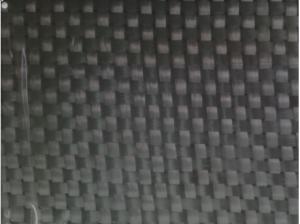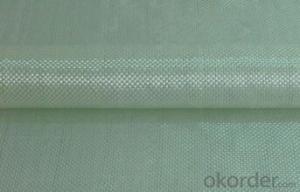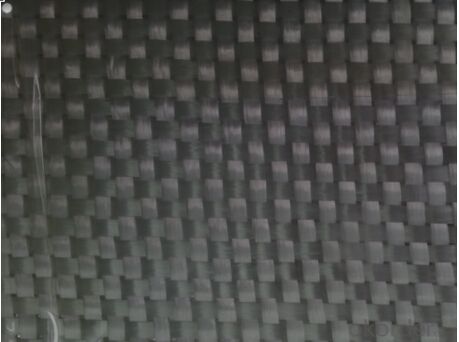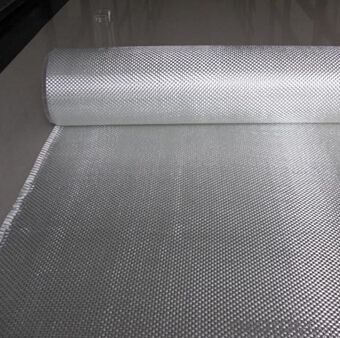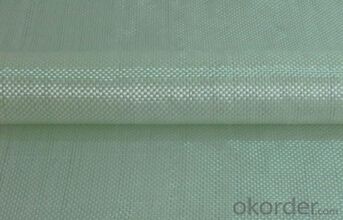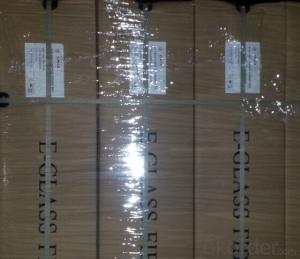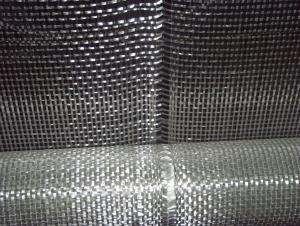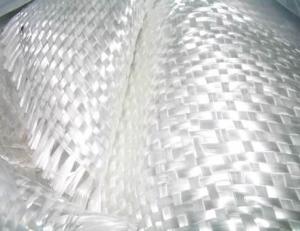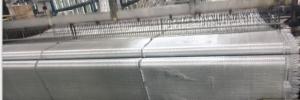Fiberglass Mat Tissue - C-Glass Woven Roving, 800g, 1m
- Loading Port:
- China Main Port
- Payment Terms:
- TT or LC
- Min Order Qty:
- -
- Supply Capability:
- -
OKorder Service Pledge
OKorder Financial Service
You Might Also Like
Structure of Woven Roving
1)Low Fuzz
2)Fast Wet-out&Impregnation
3)Easy Lay-up&Air Release
4)Excellent Mechanical Strength
5)Good Wet Strength Retension
Main Features of Woven Roving
1.CWR400
2.360-380g/m2
3.77.5px or 2250px width
Application of Woven Roving
Unit | Product No. | Weight(gsm) | Technique | Moisture content | combustible matter content(%) |
M | EWR260 | 264±13 | Plain | ≤0.15 | 0.40-0.80 |
M | EWR270 | 261±13.5 | Plain | ≤0.15 | 0.40-0.80 |
M | EWR360 | 354±18 | Plain | ≤0.15 | 0.40-0.80 |
M | EWR500 | 504±25 | Plain | ≤0.15 | 0.40-0.80 |
M | EWR580 | 576±29 | Plain | ≤0.15 | 0.40-0.80 |
M | EWR600 | 622±30 | Plain | ≤0.15 | 0.40-0.80 |
M | EWR800 | 850±40 | Plain | ≤0.15 | 0.40-0.80 |
M | CWR200 | 200±15 | Plain | ≤0.15 | 0.40-0.80 |
M | CWR400 | 385±30 | Plain | ≤0.15 | 0.40-0.80 |
M | CWR600 | 600±45 | Plain | ≤0.15 | 0.40-0.80 |
M | CWR800 | 810±40 | Plain | ≤0.15 | 0.40-0.80 |
Images:

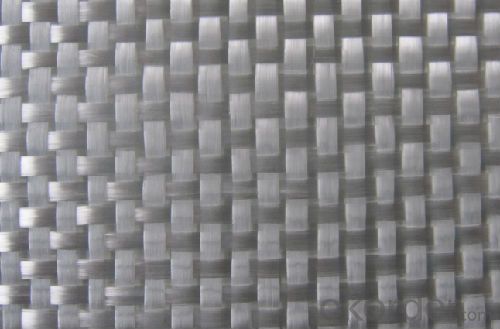
FAQ of Woven Roving
1. Why Choose us?
CNBM is a stated own company, provide the guarantee for the best quality, best service and safety business.
2. How will we guarantee the quality?
a, ISO 9001-2008 quality control system;
b, Strict and regular quality control in production;
c, Inspeciation when loading into container before shippment;
d, Sample stock for one year for quality tracing and record.
3. What is your MOQ?
Our MOQ is one pallet.
4. Can you provide sample?
Yes, samples are in stock. we can offer free sample for you.
5. Payment terms?
We can accept L/C, T/T etc.
6. Do you offer OEM service?
Yes, we can print customers’ logo on the packaging;
And the size and specification can be produced and design according to your demand.
- Q: Can fiberglass mat tissue be used for reinforcing fiberglass roofs?
- Yes, fiberglass mat tissue can be used for reinforcing fiberglass roofs. It is commonly used in the construction industry as a reinforcing material for various applications, including roofs.
- Q: How does the cost of fiberglass mat tissue compare to other reinforcement materials?
- The cost of fiberglass mat tissue is generally lower compared to other reinforcement materials such as carbon fiber or Kevlar.
- Q: Can fiberglass mat tissue be used for mold-making?
- Typically, fiberglass mat tissue is not used for mold-making. This lightweight material is made up of randomly oriented glass fibers that are bonded together with a binder. It is commonly utilized in the insulation, construction, and automotive industries for reinforcement purposes. When it comes to mold-making, other materials like silicone, latex, or polyurethane are more commonly employed. These materials possess the necessary properties to create molds that are flexible and capable of reproducing intricate details accurately. Moreover, they are user-friendly and can be poured or brushed onto the original object to form a mold. Conversely, fiberglass mat tissue lacks the flexibility and accuracy required for mold-making. It is not designed to easily conform to complex shapes or capture fine details. Additionally, it may not provide the desired level of flexibility needed to safely remove the original object from the mold without causing damage. Therefore, it is advisable to utilize specific mold-making materials that are specifically designed for this purpose instead of attempting to employ fiberglass mat tissue.
- Q: Can fiberglass mat tissue be used for insulating radiant floors?
- Yes, fiberglass mat tissue can be used for insulating radiant floors. Fiberglass is a popular insulation material due to its excellent thermal properties and resistance to moisture. Fiberglass mat tissue, in particular, is designed to provide additional strength and durability to the insulation layer. When used in radiant floor systems, it helps to prevent heat loss and improve energy efficiency by creating a barrier between the heated floor and the cooler ground or subfloor. Additionally, fiberglass mat tissue is easy to install and can be cut to fit any shape or size, making it a versatile choice for insulating radiant floors.
- Q: Is fiberglass mat tissue suitable for insulation in high-rise buildings?
- Yes, fiberglass mat tissue is suitable for insulation in high-rise buildings. It is commonly used as an insulating material due to its excellent thermal and sound insulation properties. Fiberglass mat tissue is lightweight, fire-resistant, and has a high melting point, making it a safe and effective choice for insulating high-rise buildings. Additionally, it is easy to install and offers good resistance against moisture and mold, ensuring long-term performance and energy efficiency.
- Q: What is the expected lifespan of fiberglass mat tissue in underground applications?
- The expected lifespan of fiberglass mat tissue in underground applications can vary depending on various factors such as the specific conditions of the underground environment, the quality and thickness of the fiberglass mat tissue, and the level of maintenance and care provided. However, on average, fiberglass mat tissue is known for its durability and longevity, making it suitable for underground applications. In general, fiberglass mat tissue is designed to be highly resistant to corrosion, moisture, and other environmental elements commonly found in underground settings. This makes it a reliable choice for applications such as underground pipes, tanks, and other infrastructure where protection against deterioration is crucial. With proper installation and regular maintenance, fiberglass mat tissue can have an expected lifespan of 50 years or more in underground applications. However, it is essential to note that this estimate can vary depending on the specific conditions and usage of the fiberglass mat tissue. To ensure the maximum lifespan of fiberglass mat tissue in underground applications, it is recommended to follow industry best practices, such as proper installation techniques, regular inspections, and addressing any issues, such as cracks or damage promptly. By doing so, the lifespan of fiberglass mat tissue can be extended, providing long-term reliability and durability in underground settings.
- Q: How does the width of fiberglass mat tissue affect its installation?
- The width of fiberglass mat tissue can have an impact on its installation process. When considering the width of fiberglass mat tissue, it is important to take into account the specific application or project requirements. A wider fiberglass mat tissue can offer several advantages during installation. Firstly, it allows for greater coverage area, reducing the number of overlaps needed and potentially saving installation time. This can be particularly beneficial in large-scale projects where efficiency is crucial. Additionally, a wider width can provide better overall coverage and reduce the risk of potential gaps or weak spots in the installation. This can result in a more consistent and reliable finished product, ensuring enhanced performance and durability. However, it is worth noting that a wider fiberglass mat tissue may also present certain challenges during installation. It can be more difficult to handle and maneuver, especially when working in tight or confined spaces. This can require additional care and attention to ensure proper alignment and smooth application. Furthermore, the width of fiberglass mat tissue can impact the amount of resin or adhesive required for installation. A wider width may necessitate a larger quantity of resin or adhesive, potentially increasing the overall project cost. Ultimately, the choice of fiberglass mat tissue width should be based on the specific needs and constraints of the project. Factors such as the size of the installation area, the level of coverage required, and the available resources should all be taken into consideration to determine the most suitable width for the application.
- Q: How is fiberglass mat tissue used in the automotive industry?
- Fiberglass mat tissue is commonly used in the automotive industry as a reinforcement material. It is typically applied to the surface of automotive parts, such as hoods, roofs, and doors, to enhance their strength and durability. The fiberglass mat tissue helps to improve the overall structural integrity of the vehicle, making it more resistant to impact and reducing the risk of damage. Additionally, it also contributes to noise reduction and vibration damping, resulting in a smoother and quieter ride for the occupants.
- Q: Can fiberglass mat tissue be used for repairing fiberglass canoes?
- Indeed, fiberglass canoes can be repaired using fiberglass mat tissue. This lightweight material is typically employed to reinforce fiberglass structures, and it is frequently utilized in the realm of boat repairs due to its ability to enhance strength and durability in the mended region. The mat tissue is specifically crafted to be effortlessly molded and shaped, rendering it ideal for rectifying curved surfaces like canoes. Furthermore, fiberglass mat tissue harmonizes with commonly used polyester and epoxy resins in fiberglass repairs. Consequently, it is a fitting substance for the restoration of fiberglass canoes, effectively reinstating the structural integrity of the afflicted portions.
- Q: Can fiberglass mat tissue be used for reinforcing concrete structures?
- Yes, fiberglass mat tissue can be used for reinforcing concrete structures. Fiberglass mat tissue is a thin, lightweight material made from woven glass fibers. It offers high strength-to-weight ratio and excellent corrosion resistance, making it an ideal choice for reinforcing concrete structures. When used as reinforcement in concrete, fiberglass mat tissue is typically embedded into the concrete mix. It helps improve the tensile strength and ductility of the concrete, preventing cracks and increasing its overall durability. Fiberglass mat tissue is commonly used in applications such as precast concrete panels, concrete pipes, and concrete overlays. It provides reinforcement to these structures, allowing them to withstand heavy loads and resist cracking, especially in areas where concrete alone may not be sufficient. Furthermore, fiberglass mat tissue is also resistant to chemicals and environmental factors, making it suitable for use in harsh conditions or exposed environments. It does not corrode or rust like traditional steel reinforcements, ensuring the longevity and structural integrity of the concrete structure. Overall, fiberglass mat tissue is a reliable and effective option for reinforcing concrete structures. Its lightweight nature, high strength, corrosion resistance, and durability make it a popular choice in the construction industry.
Send your message to us
Fiberglass Mat Tissue - C-Glass Woven Roving, 800g, 1m
- Loading Port:
- China Main Port
- Payment Terms:
- TT or LC
- Min Order Qty:
- -
- Supply Capability:
- -
OKorder Service Pledge
OKorder Financial Service
Similar products
Hot products
Hot Searches
Related keywords
